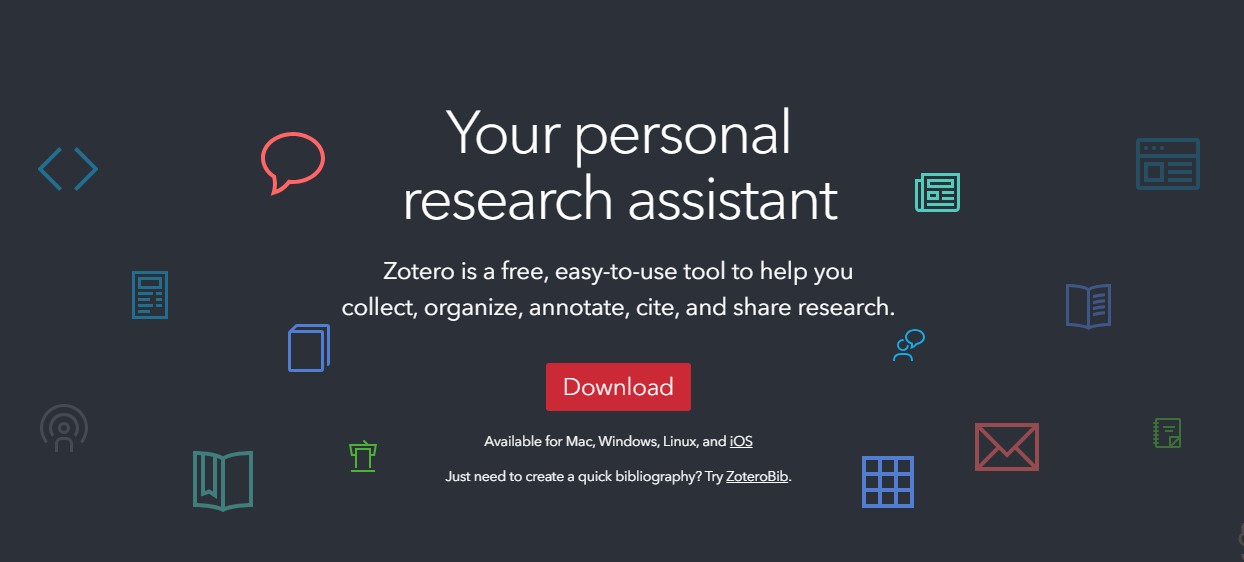Top 10 Most Read Blog Posts of the Year 2024
As we step into a new year, it's the perfect time to reflect on the content that resonated most with our readers throughout the past year. From insightful tech tips to practical guides on cloud storage and data security, Koofr’s blog has covered a wide range of topics to help you make the most of your digital experience.
Written by human for humans
In a world driven by information, the right content can inspire, inform, and transform industries overnight.
This blog post dives into the 10 most popular blog posts of 2024, highlighting the stories, strategies, and innovations that captured readers' attention in the past year.
- History and Evolution of Memory Cards
- Koofr with Zotero via WebDAV
- Uses of Cloud Computing in Everyday Life
- Synchronize Your Obsidian Notes Across Devices With Koofr's Help
- XSalsa20 Encryption vs. AES-256: What's the Difference?
- What is online tracking and how do websites track you?
- Product Comparison: Koofr vs. Google Drive
- Don't Let Bit Rot Decay Your Data: Understanding and Preventing Data Corruption
- The Worst Passwords in 2023: Is Yours Among Them?
- Learning the basics of Koofr with rclone
Blog Post #1: History and Evolution of Memory Cards
The blog post History and evolution of memory cards explores the development of memory card technology, from its inception to modern-day innovations.

The blog post highlights key milestones such as:
- The Early Beginnings: The transition from bulky storage solutions to compact, portable memory cards.
- Technological Advancements: The introduction of formats like CompactFlash, SD cards, and microSD, each improving capacity, speed, and durability.
- Usage Trends: The role of memory cards in devices like cameras, smartphones, and gaming consoles, evolving alongside these industries.
- Current State of the Art: Modern cards offering terabytes of storage with high transfer speeds, catering to the demands of 4K video and professional photography.
- The Future Outlook: Speculation on next-gen memory cards with even larger capacities and faster data handling to meet the needs of emerging technologies.
Blog Post #2: Koofr with Zotero via WebDAV
The blog post Koofr with Zotero via WebDAV provides a guide on integrating Koofr with Zotero, a popular research management tool, using the WebDAV protocol, enabling users to optimize their research workflows.
Prefer to watch a video? See How to connect Zotero with Koofr via WebDAV.

Key points include:
- Step-by-Step Guide: Instructions for configuring Koofr and Zotero for WebDAV sync, including creating a WebDAV link in Koofr and entering credentials in Zotero.
- Benefits of Integration: Advantages like secure file storage, remote access to Zotero libraries, and streamlined research management.
- Practical Use Cases: Examples of how researchers and students can benefit from this setup for efficient collaboration and resource organization.
Blog Post #3: Uses of Cloud Computing in Everyday Life
The blog post Uses of Cloud Computing in Everyday Life explores the widespread impact of cloud computing on daily activities and highlights its diverse applications.

Key points include:
- Data Storage and Sharing: Cloud services like Koofr enable users to securely store, access, and share files from anywhere, eliminating the need for physical storage devices.
- Entertainment and Media Streaming: Platforms like Netflix and Spotify rely on cloud computing to deliver seamless streaming experiences.
- Communication Tools: Services such as email, video conferencing, and messaging apps are powered by cloud infrastructure, enhancing connectivity and collaboration.
- Smart Devices and IoT: Cloud computing supports the operation of smart home devices, wearable technology, and other Internet of Things (IoT) applications.
- Backup and Data Recovery: Cloud solutions provide reliable options for automatic backups and easy recovery of lost data.
- Education and Learning: Cloud-based platforms facilitate online learning, virtual classrooms, and easy access to educational resources.
Blog Post #4: Synchronize Your Obsidian Notes Across Devices With Koofr's Help
The blog post Synchronize Your Obsidian Notes Across Devices With Koofr's Help offers a practical guide to using Koofr for syncing Obsidian, a powerful note-taking and knowledge management tool, across multiple devices.

Key points include:
- Why Synchronization Matters: The importance of keeping notes updated and accessible across devices for improved productivity and organization.
- Setting Up Koofr for Obsidian Syncing: Step-by-step instructions for linking Obsidian’s vault with a Koofr storage folder, enabling synchronization via WebDAV.
- Cross-Device Accessibility: Explanation of how Koofr ensures seamless syncing, allowing users to access and edit notes on desktops, laptops, and mobile devices.
- Benefits of the Setup: Advantages such as enhanced security, privacy, and the flexibility to work on notes from any location.
Blog Post #5: XSalsa20 Encryption vs. AES-256: What's the Difference?
The blog post XSalsa20 Encryption vs. AES-256: What's the Difference? compares two popular encryption algorithms, highlighting their differences, strengths, and use cases. It helps readers understand and select the best encryption approach for their specific requirements.

Key points include:
- XSalsa20 Algorithm: Introduction to XSalsa20, a stream cipher known for its speed, simplicity, and suitability for scenarios requiring lightweight and efficient encryption.
- AES-256 Algorithm: Overview of AES-256, a block cipher that is widely regarded as the gold standard for encryption due to its robustness and widespread adoption.
- Key Differences: Detailed comparison of the two algorithms in terms of speed, security, performance on various devices, and resistance to cryptanalysis.
- Use Cases: Guidance on when to choose XSalsa20 versus AES-256.
Blog Post #6: What is online tracking and how do websites track you?
The blog post What is online tracking and how do websites track you? explains the concept of online tracking and the methods websites use to monitor user behaviour.
Prefer to watch a video? See What is online tracking and how do websites track you?.

Key points include:
- The Definition of Online Tracking: An overview of online tracking as the collection of user data, such as browsing habits, preferences, and interactions, to analyze and tailor experiences.
- The Tracking Methods: Explanation of common techniques, including: cookies, browser fingerprinting, pixel tags and IP address monitoring.
- Purpose of Tracking: Insights into why websites track users, such as improving user experience, targeted advertising, and analytics.
- Concerns and Impacts: It discusses the privacy concerns, data security risks, and the potential misuse of collected information.
- How to Limit Tracking: Practical tips for reducing tracking, including using private browsing modes, blocking cookies, and employing tracker-blocking tools.
Blog Post #7: Product Comparison: Koofr vs. Google Drive
The blog post Product Comparison: Koofr vs. Google Drive compares the features, benefits, and drawbacks of Koofr and Google Drive to help users choose the right cloud storage solution.

Key points include:
- Storage Options: Koofr offers smaller, flexible storage plans, while Google Drive provides larger free storage capacity but less customizable paid plans.
- Privacy and Security: Koofr emphasizes strong privacy policies and does not scan user data, whereas Google Drive’s integration with other Google services may involve data usage for personalization.
Explore Koofr. Join us for free.
- Ease of Use: Both platforms are user-friendly, but Koofr’s simplicity appeals to those looking for a minimalist interface, while Google Drive’s extensive features suit users needing advanced tools.
- File Sharing and Collaboration: Google Drive excels in collaboration with tools like Google Docs, Sheets, and real-time editing, while Koofr focuses on straightforward file sharing and secure storage.
- Integration: Koofr offers integration with other cloud storage providers for easy file management, while Google Drive is deeply integrated into the Google ecosystem.
- Pricing: Koofr’s pricing is competitive for smaller needs, whereas Google Drive provides more expansive options for those requiring higher storage capacities.
Blog Post #8: Don't Let Bit Rot Decay Your Data: Understanding and Preventing Data Corruption
The blog post Don't Let Bit Rot Decay Your Data: Understanding and Preventing Data Corruption discusses the phenomenon of data degradation over time, known as bit rot, and offers strategies to prevent it.

The blog explains:
- The Causes of Bit Rot: Common causes include ageing storage devices, electromagnetic interference and file format obsolescence.
- The Impact of Bit Rot: Potential consequences include inaccessible files, corrupted backups and the loss of valuable personal or professional data.
and talks about Prevention Strategies:
- Regular Backups: Maintaining updated backups across multiple devices or cloud storage.
- Data Integrity Checks: Using checksums and other methods to detect and repair corrupted files.
- Media Refreshing: Periodically transferring data to newer storage devices or formats.
- Cloud Storage: Leveraging reliable cloud services with redundancy and regular data integrity checks.
Blog Post #9: The Worst Passwords in 2023: Is Yours Among Them?
The blog post The Worst Passwords in 2023: Is Yours Among Them? provides a timely review of the most common and easily guessed passwords of the year, highlighting the dangers of poor password choices and offering insights on how to improve online security. It's an essential read for anyone looking to enhance their digital security.

Key points include:
- List of Worst Passwords: The post outlines the most frequently used and weakest passwords. These passwords are incredibly easy for hackers to guess, putting users' accounts at significant risk.
- Security Risks: The blog emphasizes how using simple, predictable passwords makes online accounts vulnerable to hacking attempts, especially in light of increasingly sophisticated cyberattacks like brute-force and credential stuffing attacks.
- Why People Use Weak Passwords: It touches on the reasons why people still opt for weak passwords. Despite the availability of better security practices, many continue to rely on easy-to-remember passwords.
- Best Practices for Strong Passwords: The post offers practical advice on creating strong, unique passwords and encourages the use of password managers to securely store complex passwords.
- Multi-Factor Authentication (MFA): The blog advocates for the use of multi-factor authentication as an additional layer of security, even if a password is compromised.
Blog Post #10: Learning the basics of Koofr with rclone
The blog post Learning the Basics of Koofr with Rclone introduces users to Koofr’s integration with Rclone, a command-line tool that allows seamless management of cloud storage.
Prefer to watch a video? See Learning the Basics of Koofr with Rclone.
Key points include:
- Why Use Rclone with Koofr?: The post highlights the benefits of using Rclone with Koofr, such as automating backups, syncing files between cloud services, and managing large datasets efficiently through command-line operations.
- Setting Up Rclone with Koofr: A step-by-step guide is provided to configure Rclone with Koofr, including obtaining an API key and setting up remote storage connections.
- Basic Rclone Commands: The post covers common Rclone commands, such as uploading, downloading, syncing, and listing files, helping users get started with cloud management through Rclone.
- Advanced Tips: It also touches on advanced features like encryption and scheduling, which can enhance the functionality and security of data transfers and backups.
Thank you for being part of our journey throughout the year 2024! We truly appreciate your support and engagement with our blog. Your interest motivates us to keep sharing valuable insights and tips.
Explore Koofr. Open a free account.
We invite you to explore Koofr and take advantage of our secure, user-friendly cloud storage solutions. Don’t forget to follow us on social media to stay updated with the latest news, tips, and helpful content. Here’s to another year of digital growth and learning!
Join us on the Koofr subbredit. We'd love to hear from you!


